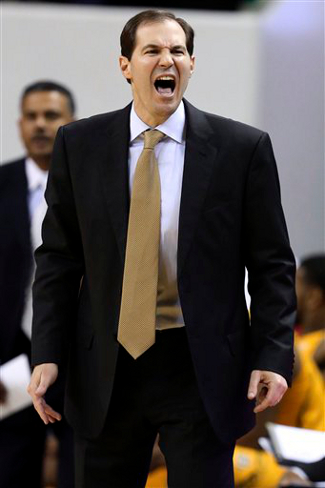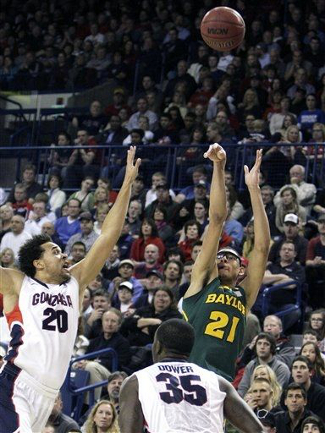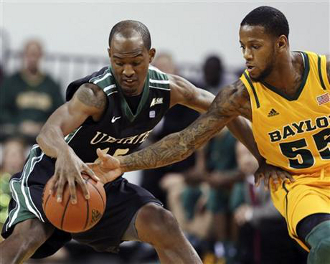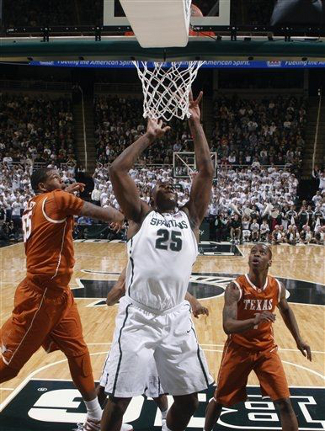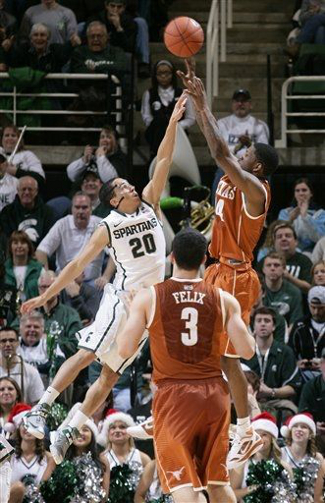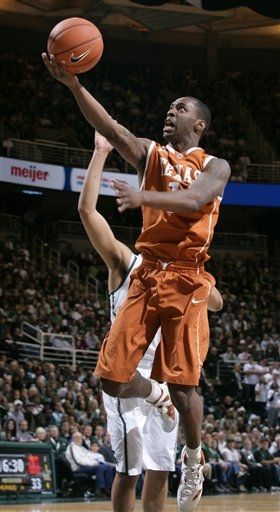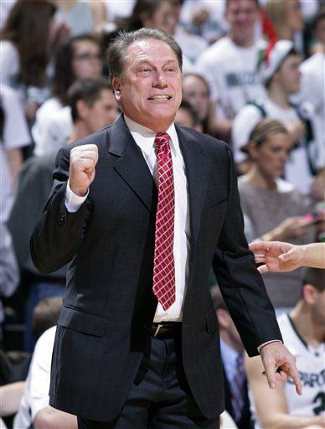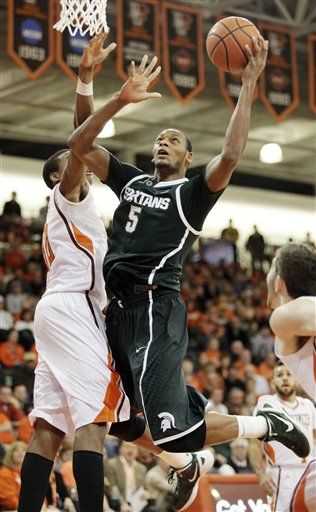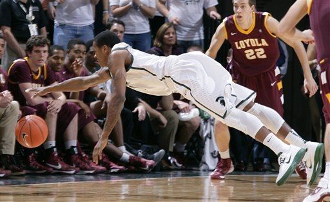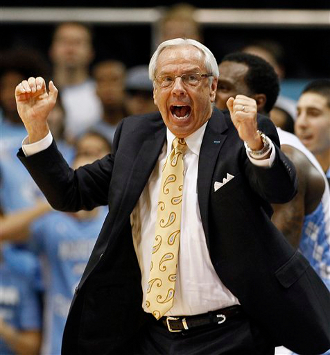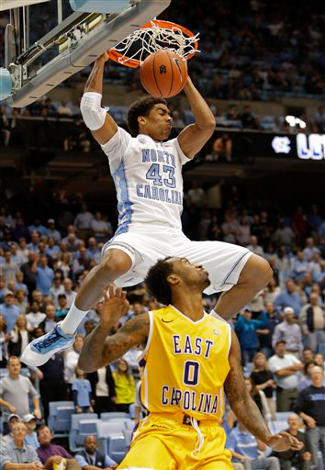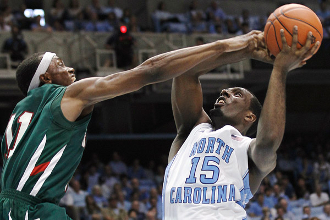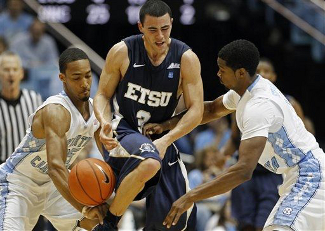Ferrell Center | Waco, TX | Tip: 1 P.M. CT | TV: ESPNU LRT Consecutive Game #234 The Texas Longhorns head into conference play moving in the right direction. A home win over a talented but inconsistent UNC squad and an impressive performance on the road against Michigan State revealed a confident Longhorn team that looked nothing like the one that sleepwalked through a disastrous week on the island of Maui. Last Saturday, the Longhorns added another piece of the puzzle when tenacious rebounder Jaylen Bond rejoined the squad. There was also the huge news in late December that sophomore point guard and unquestioned team leader Myck Kabongo would be eligible for the final eight games of the season. With one of the nation’s best defenses and a string of good news, things are finally looking up for Texas. Of course, opening conference play on the road against a formidable Baylor team could stop that momentum in an instant.
Scott Drew won’t be on the Baylor sideline today On paper, the Bears looked like a challenger to Kansas in the Big 12. On the court, the results have been mixed. Baylor recorded the school’s first road win against a Top 25 non-conference opponent when the Bears went into Rupp Arena and upset a young Kentucky team that is still finding its way. However, that win was sandwiched between home losses to the College of Charleston and Northwestern. There’s no doubt that these Bears should be one of the elite teams in the conference, but the question is whether or not they can consistently perform at a high level through the league’s grueling 18-game schedule. By the numbers The Bears have a practically unstoppable combination of talent in the paint and on the perimeter, and it shows with an adjusted offensive efficiency mark that is currently 17th in the nation according to Ken Pomeroy. The Bears score 1.132 points per possession, while holding opponents to an adjusted 0.945 points. Baylor has been impressive so far this season against one of the nation’s toughest schedules. Pomeroy has their non-con slate ranked 32nd toughest in the land, as it also included a neutral-site game against Colorado, a home date with BYU and a true road game against Gonzaga last weekend. While the efficiency numbers above have already been adjusted to account for that difficult schedule, the rest of their stats have not, and they are still dominant. The Bears are averaging more than 40 points per game in the paint, giving them one of the nation’s best two-point field-goal percentages at 55.4% per game. Their experienced backcourt takes care of the ball, posting a Top 30 turnover percentage of just 17.3%. Surprisingly, their offensive rebounding mark is at 34.2%, which just qualifies for the top third of Division I teams. Defensively, the Bears have been using much more man than in years past, but it hasn’t stopped oppponents from hitting nearly 37% of their three-point attempts. Although Baylor starts four upperclassmen, there are still some major issues with communication on defense, which is keeping them from being truly dominant on that side of the ball. Their adjusted defensive efficiency is still ranked 89th in the country, but there is definitely room for improvement. Prior to their loss to Gonzaga, the Bears appeared to be making strides in that department, holding BYU and USC Upstate to less than 0.9 points per possession. The Bulldogs torched Baylor both inside and out, however, posting 1.26 points per possession and an effective field goal percentage north of 60%. There’s no doubt that Gonzaga is a title contender this season, but Baylor will need better performances against elite teams if it wants to live up to its preseason billing. Meet the Bears For the first time in a long time, Texas will be battling the Bears with a new face on the Baylor sideline. Jerome Tang will be at the head of the Baylor bench this afternoon, as head coach Scott Drew is sitting out the first two conference games as part of the university’s self-imposed NCAA penalties. Although Baylor will be without its head coach, there’s still a ton of talent on the court for Texas to contend with. The man that runs the show for Baylor is Big 12 Preseason Player of the Year Pierre Jackson (No. 55). If you don’t remember him from his impressive debut season in Waco last year, you will certainly know him by the end of this one. Jackson leads the league in scoring with 19.6 points per game, but is also an incredible facilitator, dishing out more than six assists each night. It’s incredibly tough to shut down Jackson, because he can beat you in a variety of ways. His three-point shot is incredibly accurate, and he needs very little space to get it off. Jackson loves to simply step into a smooth three as the team races up the court in transition, so the Longhorns have to quickly find him as they get back on defense. Jackson can also easily create his own shot in the half-court set. He’s a master at varying his speeds on the drive, hesitating just long enough to get a defender to downshift before he uses his blazing speed to drive to the rim. Jackson also has a wicked crossover that he loves to use on the wings, freezing opponents while he bursts to the rack. Baylor also runs numerous ball screens for him on the perimeter, freeing him up to quickly drive to the rim. While he’s great at finishing through traffic, he really makes the highlight reel with his great feeds to the team’s bigs. As opponents scramble to provide help on Jackson’s drives, he’ll shovel a pass into the post or zip a one-handed feed to his teammate for a dunk. Colorado and Gonzaga both gave Jackson some problems by rushing the ball screen and doubling him hard. The Buffaloes also had the luxury of a 6’6″ guard in Spencer Dinwiddie who could sag off of Jackson to limit his drives, yet still close out and contest three-pointers with his length. Texas doesn’t have that option today, but the Horns can certainly try to use their bigs to double past the ball screens and disrupt the Baylor half-court sets.
Isaiah Austin is a 7-footer with a great jump shot One thing that helps Baylor when they are doubled in those situations is the impressive game of 7’1″ freshman Isaiah Austin (No. 21). The big man has a great jump shot and is accurate beyond the arc, having hit 33% of his triples on the season. When Jackson is double-teamed, Austin’s height and long-range accuracy always give the Bears a relief option on the perimeter. Austin is also very nimble with the basketball and can easily drive against opposing big men who try to guard him on the perimeter. He still has a very wiry frame and isn’t built to truly bang in the post, but with his nice shot and usual height advantage, it often doesn’t make a difference. A few more pounds of muscle will make Austin practically impossible to stop, but as it is, he’s still a match-up nightmare. With Austin often stretching the floor, the man in the middle is junior Cory Jefferson (No. 34). He averages 13.2 points and 8.6 rebounds per game, and his offensive rebounding mark of 11.5% ranks him just outside the Top 200 nationally. Jefferson makes his hay on putbacks and easy finishes near the rim after Jackson has drawn defensive help. However, that’s not to say he can’t score outside the paint. Jefferson has a serviceable midrange game, but still lacks some consistency. The Horns want to force him to score on his jumpers, and hope that this is one of those days he’s not hitting them. Even if Texas can keep Jefferson from scoring easy points, the Horns still have to worry about one of the nation’s most dangerous three-point shooters in Brady Heslip (No. 5). The Canadian junior has hit 35.6% of his long-range attempts this season, which is down considerably from his mark of 45.5% in 2011-12. However, last year Heslip lived on the perimeter and rarely drove the basketball. This year, he’s using the head fake to get defenders up before he drives for floaters or layups. Rounding out the starting five is senior guard A.J. Walton (No. 22), the team’s defensive specialist. He is second in school history with 185 steals in 116 career games. While Walton is usually harassing the opponent’s best perimeter player, he still can score the ball. The senior is very smart about using his body inside to draw contact and shield the basketball, making sure to get it up and always have a chance at the three-point play. Although Walton is probably too small to be tasked with shutting down Sheldon McClellan, he’ll likely be right in the jersey of Julien Lewis all afternoon. The one thing that may help Texas, however, is the aforementioned problem Baylor has had with communicating on defense. The Horns love to run both Lewis and McClellan through multiple screens off the ball, while Baylor often forgets to switch in those situations. If that happens this afternoon, there is little that Walton can do to stop the Texas shooters when he’s hung up on a screen without backup from his teammates. The Bears rely primarily on their starting five, with those players eating up more than 76% of the team’s minutes. Still, the short bench is very talented and causes little drop-off when the starters need a breather. Freshman Rico Gathers (No. 2) is built like a tank, or at least a middle linebacker. He’s only averaging 15.4 minutes per game with Jefferson ahead of him, but still manages to grab 4.3 boards and score nearly six points per game. If Jefferson and Gathers both find themselves in foul trouble as they did against Gonzaga, freshman Taurean Prince (No. 35) will see much more than his average of five minutes. His post defense is still a work-in-progress, something that Gonzaga’s Elias Harris took full advantage of when Prince was in the game. In the backcourt, Cal transfer Gary Franklin (No. 4) gives some quality minutes off the bench, and can both knock down the three or slice through the defense off the bounce. Sophomore Duece Bello (No. 14) had a breakout performance in last season’s Big 12 Championship game, but hasn’t followed it up with consistent success this year. He has incredible hops and brings length to the perimeter with his 6’4″ frame, but is playing less than 12 minutes per game this season. Freshman L.J. Rose (No. 1) also gets some time at the point each game, as he learns the ropes from Jackson. He’s currently averaging less than seven minutes per game. Keys to the game 1) Limit second-chance points – The Bears aren’t as strong on the offensive glass as you might expect, although Jefferson has a nose for the ball on that end of the court. Still, Baylor is already so tough to stop on offense that Texas cannot afford to give up many offensive rebounds in this game. The Longhorns need to get a body on Jefferson when the shot goes up, and make sure that Austin doesn’t crash the glass from his usual spots outside the lane.
The Baylor guards have quick hands on defense 2) Turn Jackson into a passer – This key is much easier said than done, although the approach mentioned above is likely the best bet. Texas should blitz ball screens and stay close to the senior guard when he’s isolated on the perimeter. Although he can easily beat opponents off the dribble, the Longhorns will have to be ready to provide help once he drives and be willing to swallow a few points when he makes some impressive interior passes to his big men. 3) Cut down on live-ball turnovers – With Walton’s quick hands on the perimeter, the Bears get their fair share of breakaways. Couple his defense with Texas’ own turnover problems, and it could be a recipe for trouble. Although Walton gets all the defensive praise, Jackson also gets quite a few swipes from unsuspecting opponents. Once he gets out on a fast break, his lightning-quick speed means that he is guaranteed to get to the rack on the other end. Texas is already going to have a tough time shutting down the Baylor offense, so they simply cannot be giving up fast break points if they want to have a shot this afternoon. |








